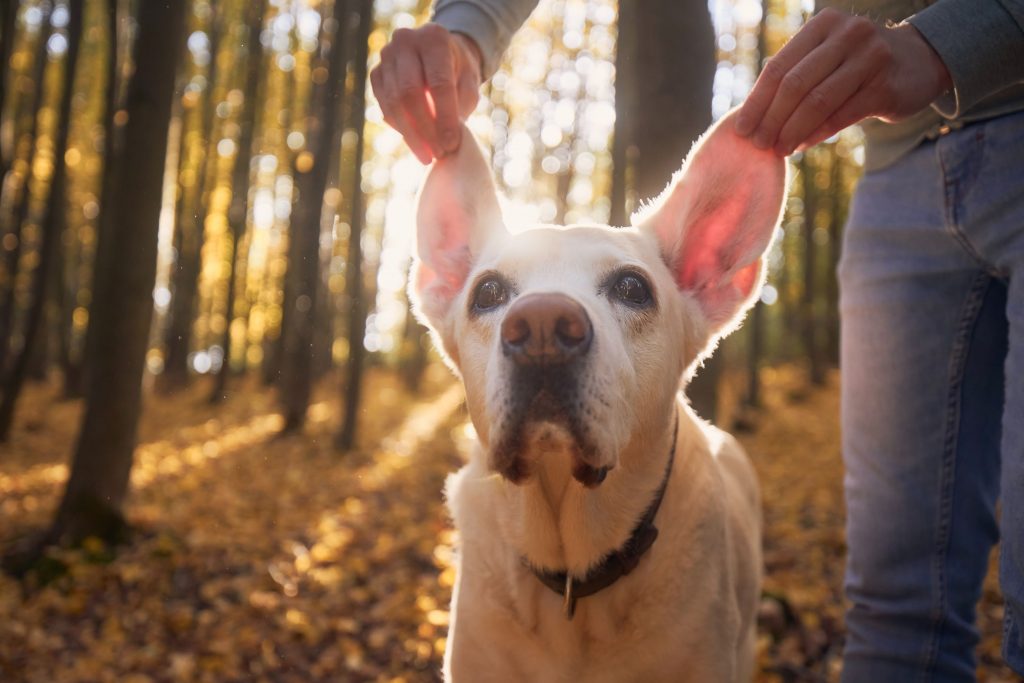
Silent Companions: Tips for Caring for Your Deaf Pet

Pets, just like people, can be born with congenital deafness or experience hearing loss due to recurring ear infections or simply old age. Most pets adapt quite well and, with a few simple strategies, can learn new ways of communicating.
Our team at Arlington Animal Hospital has gathered the following information to help you understand more about deaf pet care.
Signs of Hearing Loss in Pets
Hearing loss can be gradual, as in the case of older pets whose hearing simply degenerates over time; or sudden, as in the case of a severe infection or injury. In either instance, you will likely notice these signs:
- Your pet ignores you when you call his name.
- The sound of food being poured into his dish no longer draws his attention.
- He no longer reacts to sounds that used to excite him, such as the doorbell or your car keys.
- Your pet may sleep longer and more soundly.
If you spot any of these symptoms, please contact us for a thorough examination.
Communication With Deaf Pets
When verbal cues no longer work, there are other forms of communication with deaf pets.
Emergency whistles. Pets with partial hearing loss may still respond to the high frequency of an emergency whistle. This is a good strategy to use outdoors when you need your pet to “come.”
Use non-auditory signals. At home, try stomping your feet, turning a light off and on, or waving your arms to signal simple commands like “come,” “dinnertime,” or “time for a walk.”
Training Deaf Pets
Hearing-impaired pets can be trained just as easily as their full hearing friends. Here are some tips for success when it comes to training deaf pets:
- Start with just a few, important commands, like “come,” “stay,” “no,” and “go outside.”
- Designate a simple but specific hand gesture for each command.
- You can also use proper American Sign Language (just keep it brief) or sign language for pets, such as the K9Sign system.
Life With Hearing-Impaired Pets
Deaf pet care and day-to-day life with hearing-impaired pets just takes a few extra precautions to ensure your pet’s safety and to avoid startling him unnecessarily. Here are some more strategies for helping your deaf pet live his best life:
- Facial expressions still matter, so smile when he does something that pleases you, but use a stern face with serious pet sign language commands, like “no.”
- Be consistent with your commands and your timing.
- Stick to a daily routine as much as possible.
- Approach your deaf pet using heavy footsteps to avoid startling him.
- Gently touch his back to get his attention.
- Don’t allow hearing-impaired pets to roam off-leash.
- Keeping social interactions limited to familiar pets and people whenever possible.
- Always be patient and provide yummy rewards to reinforce your pet’s successes.
- Keep up with routine wellness visits to maintain optimal health.
We hope these tips have helped! Please contact us if you have questions about helping your deaf pet or to schedule a visit.
Contact Us!
2301 Columbia Pike #G-1, Arlington, VA 22204
Phone: (703) 920-5300
Fax: (703) 685-8860
Email: info@myarlingtonvet.com
Office Hours
-
Monday
8 a.m. – 8 p.m.
-
Tuesday
8 a.m. – 8 p.m.
-
Wednesday
8 a.m. – 6 p.m.
-
Thursday
8 a.m. – 6 p.m.
-
Friday
8 a.m. – 6 p.m.
-
Saturday
8 a.m. – 2 p.m.
-
Sunday
CLOSED
- Doctors’ hours are by appointment only.



